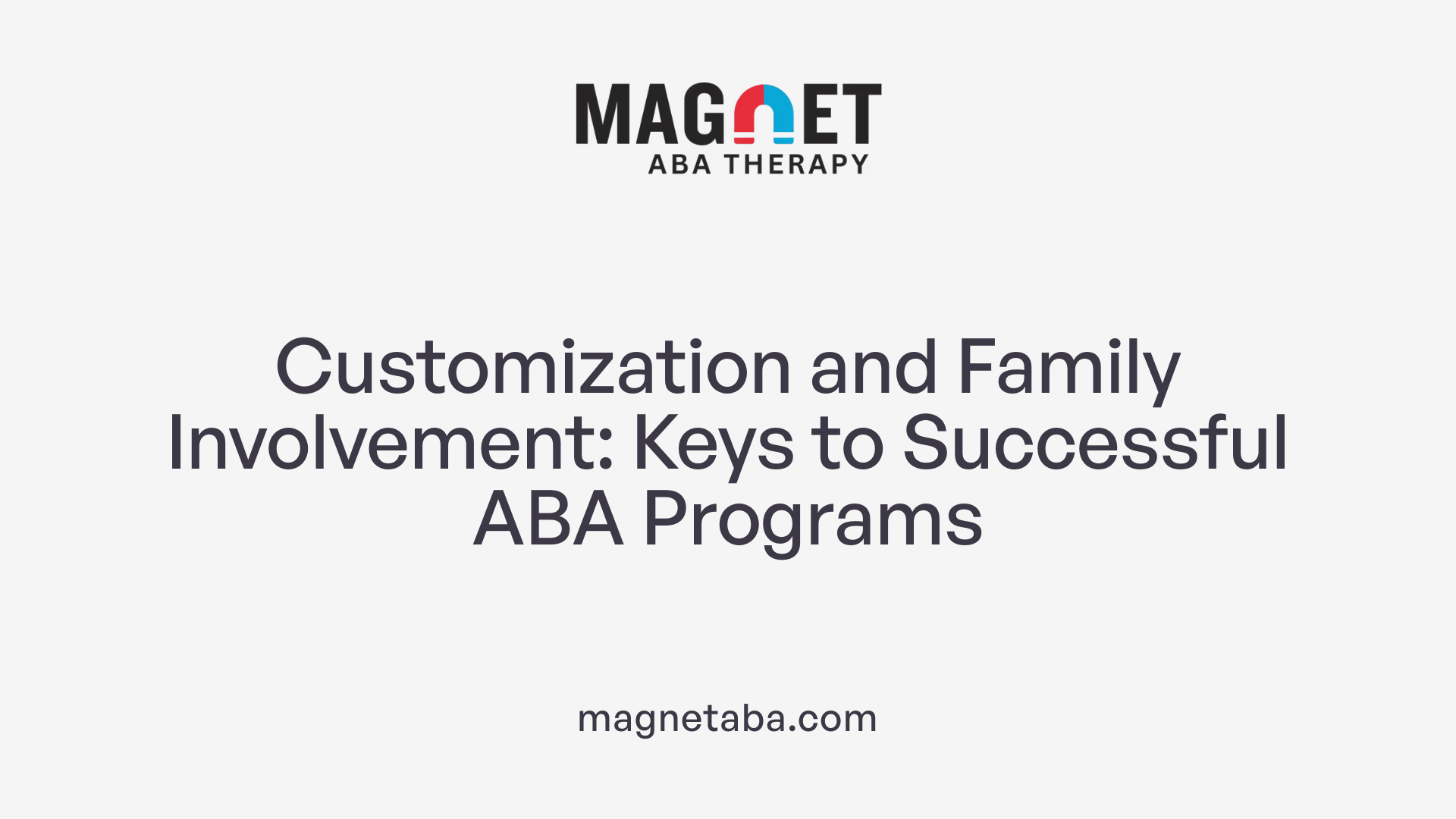Understanding ABA Therapy and the Nature of Plateaus
Applied Behavior Analysis (ABA) therapy is a scientifically grounded approach designed to support individuals with autism in developing essential social, communication, and daily living skills. Despite consistent therapy, many children experience phases where progress seems to stall, commonly referred to as plateaus. Recognizing the nature of these plateaus and knowing the strategic steps to address them is key to ensuring continued growth and success in ABA therapy.
What is ABA Therapy and Who Provides It?

What is Applied Behavior Analysis (ABA) therapy and how is it used to support individuals with autism?
Applied Behavior Analysis (ABA) therapy is a scientific method aimed at improving social, communication, and learning skills for individuals with autism. It works by increasing positive behaviors while decreasing those that may be harmful or hinder development. Practitioners use the ABC model—examining what happens A before, B during, and C after a behavior—to understand and modify responses in effective ways.
ABA therapy involves designing customized programs tailored to each individual's unique needs. These programs may include structured tasks, play-based activities, and naturalistic teaching to encourage skill generalization across environments. Evidence shows ABA can improve language, social interaction, daily living skills, and reduce problem behaviors when therapy is started early and is intensive. Progress is tracked carefully using data-driven methods, and family members are actively included to help maintain skills in everyday settings.
Who typically provides behavioral analysis therapy for autism?
ABA therapy is delivered by trained and certified professionals specializing in behavioral analysis. The primary providers include:
- Board Certified Behavior Analysts (BCBAs): Advanced-degree holders who design and oversee therapy plans.
- Assistant Behavior Analysts (BCaBAs): Support BCBAs and help with program implementation.
- Registered Behavior Technicians (RBTs): Provide direct therapy under supervision.
- Paraprofessionals: Assist with therapy delivery as needed.
These professionals conduct assessments, develop individualized intervention plans, and monitor ongoing progress. Collaboration with families is essential, often involving parent training to reinforce strategies at home. The combined effort of this team ensures evidence-based interventions are effectively carried out to support the person with autism.
Customizing therapy plans and family involvement
Each child's therapy plan is personalized, considering their current abilities, preferred activities, and motivation style. Consistent implementation and engagement from families enhance outcomes significantly. Parents and caregivers receive guidance in reinforcing learned behaviors, supporting routines, and creating positive, engaging environments. This partnership between therapists and families maximizes skill acquisition and generalization, ultimately helping children grow toward greater independence.
Identifying and Understanding Plateaus in ABA Therapy

What Constitutes a Plateau in Therapy Progress?
A plateau in ABA therapy occurs when a child's development or skill acquisition appears stagnant despite ongoing therapy efforts. Rather than progressing, the child’s skills remain at a certain level for a period, signifying a pause in the expected growth curve.
Common Causes of Plateaus Such as Task Difficulty and Motivation
Several factors can cause plateaus, including increasing task difficulty that outpaces the child's current abilities. Limited motivation, inconsistent reinforcement strategies, and environmental changes also contribute. For example, if tasks become too challenging without adequate support, or if the child loses interest, progress may stall.
Symptoms and Signs of Regression or Stagnation
Signs of a plateau include a lack of improvement in targeted skills, increased frustration, resistance to therapy, or even regression where previously acquired skills diminish temporarily. These symptoms highlight the need to reassess and adjust the therapy approach.
Statistical Occurrence of Plateaus in ABA Therapy
Research indicates that nearly 40% of ABA clients experience at least one plateau phase during their treatment. This shows that plateaus are a common and natural part of the ABA therapy journey, not an indication of failure.
What Are the Main Goals of Autism-Focused Behavioral Analysis Therapy?
The primary objective of ABA therapy is to promote greater independence by improving communication, social interactions, and daily living skills. It aims to reduce challenging behaviors through understanding their causes and teaching functional alternatives. These goals are tailored to each individual and often begin with foundational skills, supporting the eventual development of complex abilities such as language and social engagement. ABA emphasizes evidence-based techniques like positive reinforcement and structured teaching, continually monitoring progress to adapt goals and strategies for optimal outcomes.
Key Strategies to Overcome Plateaus and Setbacks

Reassessing and adjusting therapy goals
When a child experiences a plateau in ABA therapy, revisiting and modifying the therapy goals can be crucial. Setting realistic and appropriately challenging objectives tailored to the child's current abilities helps reignite progress. Goals should be flexible and responsive to the child's development stages.
Breaking down complex skills into smaller, manageable steps
Dividing skills into smaller components reduces frustration and builds confidence in the child. This approach allows for steady mastery of tasks that might otherwise seem overwhelming, promoting continuous growth even during plateau phases.
Incorporating personalized reinforcement strategies
Using individualized reinforcement approaches, such as preferred toys, activities, or social praise, can enhance motivation. Different reinforcement methods may be required at different stages or settings to sustain engagement and encourage learning.
The role of Functional Behavior Assessment (FBA) in identifying barriers
Conducting or revisiting an FBA helps uncover new triggers or obstacles that may cause slowdowns in progress. This assessment guides therapists in adapting interventions to address emerging challenges effectively.
Using visuals and schedules to help with transitions and routines
Visual aids and structured schedules assist children in understanding changes and routine expectations. These tools ease transitions and minimize anxiety, fostering a more positive and predictable therapy environment.
Maintaining consistency and celebrating small successes
Consistency in therapy implementation across sessions and environments is vital for progress. Additionally, recognizing and celebrating small achievements builds momentum and encourages continued effort from the child.
By combining these strategies, therapists and caregivers can effectively address setbacks and plateaus, turning challenges into opportunities for renewed progress in ABA therapy.
The Importance of Collaboration and Environment in Sustaining Progress
Collaboration among therapists, teachers, and family members
Successful ABA therapy relies heavily on effective communication and collaboration among all involved parties. Therapists, educators, and family members working together create a consistent support system that bolsters the child's progress.
Parental involvement and training to support therapy
Parents play a vital role by actively participating in therapy sessions and reinforcing strategies at home. Training programs for caregivers enhance their ability to help practice skills, manage setbacks, and celebrate small successes, fostering momentum in development.
Creating engaging and positive therapy environments
A positive and stimulating therapy setting encourages a child’s motivation and participation. Incorporating preferred toys, social praise, and visual aids like schedules can make transitions smoother and sessions more enjoyable.
Addressing environmental factors, fatigue, and sensory sensitivities
Tailoring therapy to accommodate factors such as fatigue, sensory sensitivities, or changes in routine helps minimize frustration. Adjusting these elements ensures the child remains comfortable and receptive to learning.
Using varied activities and different settings to maintain motivation
Introducing a range of activities and changing practice environments prevent boredom and promote generalization of skills. This variety keeps children engaged and better supports continued advancement in therapy.
Maintaining a Long-Term Perspective: Realistic Expectations and Ongoing Support
Setting realistic expectations for gradual progress
Progress in ABA therapy is often gradual and can include phases where development appears to slow or plateau. Understanding that these setbacks are a natural part of the learning process helps families and therapists maintain patience and motivation.
Understanding setbacks as opportunities for adaptation
Setbacks or plateaus should not be viewed as failures but as important signals indicating a need to adapt therapy strategies. They provide valuable opportunities to adjust goals, reinvigorate motivation, and tailor interventions to the child’s current abilities.
Importance of continuous data review and frequent reassessment
Regular data collection and ongoing functional behavior assessments allow therapists to detect subtle trends and identify new obstacles or triggers. This continuous review supports timely modifications to the therapy plan, ensuring it remains effective and appropriately challenging.
Integrating multiple approaches tailored to individual needs
Instead of relying on a single program, integrating various tailored strategies that address the child's complex needs fosters renewed progress. Personalized reinforcement methods, varied activities, and environmental adjustments help maintain engagement and target diverse skill areas.
Benefits of ongoing training and follow-up for families and providers
Providing in-person and distance training programs, along with ongoing follow-up and reassessment, empowers caregivers and professionals to support skill practice consistently outside therapy sessions. This collaboration enhances the child’s learning environment across settings.
The impact of perseverance and consistent effort on lasting outcomes
Consistent application of ABA principles, dedication from therapists and families, and celebrating small successes build confidence and momentum. Over time, this perseverance leads to improved communication, social interactions, independence, and long-term positive outcomes for the child.
Empowering Your Child Beyond Plateaus
Plateaus and setbacks in ABA therapy are natural and do not indicate failure but signal opportunities to adapt and refine strategies. By understanding the therapy’s principles, recognizing the causes of progress plateaus, and actively employing tailored adjustments to goals and teaching methods, families and therapists can reignite developmental growth. Collaboration, consistent implementation, and a nurturing environment further support sustained progress. With patience, dedicated involvement, and professional guidance, children can overcome challenges and continue advancing their skills, leading to improved independence and quality of life through ABA therapy.
References
- Dealing With Setbacks In ABA Therapy? Here's What To Do!
- How to Handle Plateaus in ABA Progress - ABA Navigator
- What Progress Looks Like in ABA Therapy for Autism
- Children Whose Progress with Autism Has Slowed
- How To Navigate Success and Setbacks in ABA Therapy
- Who can provide ABA therapy?
- Applied Behavior Analysis (ABA)











